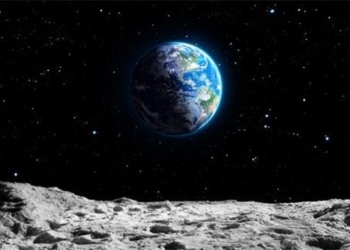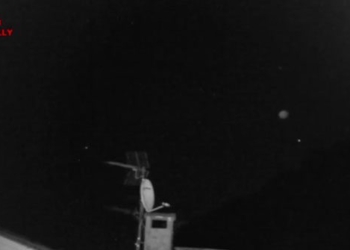According to researchers, theoretically, advanced extraterrestrial civilizations could build a megastructure known as a Dyson Sphere around black holes to harness their energy.
Dyson Sphere
While some scientists are trying to explore whether extraterrestrial civilizations might exist somewhere in deep space, a team of researchers led by astronomer Tiger Yu-Yang Hsiao from National Tsing Hua University (China) is considering a different type of project.
According to Vice News, Hsiao’s team is essentially searching for evidence of hypothetical megastructures called Dyson Spheres.
The researchers have indicated that, theoretically, advanced extraterrestrial civilizations could build megastructures known as Dyson Spheres around black holes to harness their energy, which could be 100,000 times that of the Sun. This construction could even provide us with a way to detect the existence of extraterrestrial societies.

The immense gravitational field of a black hole can generate energy through several theoretical processes.
While a conventional Dyson Sphere is thought to be an artificial structure encompassing a star and capturing a significant portion of its energy output, researchers propose searching for an “inverted Dyson Sphere” (IDS) that could siphon energy from… a black hole in a similar manner.
“A black hole could be a more promising and efficient energy source than harvesting from a main-sequence star,” the research team hypothesized.
Immense Gravitational Field of a Black Hole
Tomáš Opatrný, a physicist at Palacký University Olomouc (Czech Republic), who is not involved in this work, stated: “I enjoy these speculations about what advanced civilizations could achieve. A Dyson Sphere around a black hole would provide its builders with a tremendous amount of power.”
Arguing that the energy output of a black hole far exceeds that of a star, the research team also claimed that the waste heat from an IDS could “be detected by our current telescopes.”
The team noted: “We speculate that such a civilization could collect energy remotely or view the energy source as a power station rather than living around a black hole in a harsh environment.”
If humanity’s energy demands continue to rise, there may come a time when our electricity consumption approaches or even exceeds the total energy available on our planet. Therefore, physicist Freeman Dyson argued back in 1960, borrowing from British science fiction author Olaf Stapledon, that any sufficiently advanced civilization wishing to survive would need to construct massive structures around stars to harness their energy.
Most of these Dyson Spheres involve multiple satellites orbiting around or stationary around a star. Such megastructures would need to convert that solar energy into usable energy, a process that generates waste heat.
Astronomer Tiger Hsiao from National Tsing Hua University suggests that we might be searching in the wrong direction. In his research, he and his colleagues calculated whether a Dyson Sphere could be used around a black hole. They analyzed black holes of three different sizes: 5, 20, and 4 million times the mass of the Sun. Correspondingly, these reflect the lower and upper limits of black holes known to have formed from the collapse of massive stars. Supermassive black holes are believed to lurk at the center of the Milky Way.
The immense gravitational field of a black hole can generate energy through several theoretical processes. These include radiation emitted from the accumulation of gas around the hole, the rotating “accretion” disk of material gradually falling toward the event horizon, relativistic jets of matter and energy ejected along the axis of the hole, and Hawking radiation releasing energy in the process.

Dyson Sphere.
From their calculations, Hsiao and his colleagues concluded that the accretion disk, surrounding gas, and jets from the black hole could all serve as viable energy sources. In fact, the energy from the accretion disk of a stellar black hole with a mass 20 times that of the Sun could provide an amount of energy equivalent to Dyson Spheres around approximately 100,000 stars.
According to the researchers, the waste heat signal from a Dyson Sphere could somehow exist at temperatures exceeding 3000 Kelvin, higher than the melting point of known metals—around a stellar mass black hole in the Milky Way could be detectable at ultraviolet wavelengths.
Astronomer Hsiao mentioned that such signals could be found in data from various telescopes, including the Hubble Space Telescope and NASA’s Galaxy Evolution Explorer.
Meanwhile, a “solid” Dyson Sphere—operating below 3000 Kelvin—could be detected in the infrared, such as through the Sloan Digital Sky Survey or the Wide-field Infrared Survey. The latter is already familiar with the search for infrared signals from traditional star-based Dyson Spheres. However, like all other searches, it remains an enigma.
Astronomical physicist Inoue Makoto from the Academia Sinica Institute of Astronomy (Taipei) stated that ordinary black holes could support what are known as Type II civilizations, which have total energy demands equivalent to that of an entire star system. Supermassive black holes could fuel Type III civilizations, with energy consumption equivalent to that of an entire galaxy.
The research team is set to report next month in the Monthly Notices of the Royal Astronomical Society. If a supermassive black hole is harnessed, the energy it provides could be a million times greater.





















































